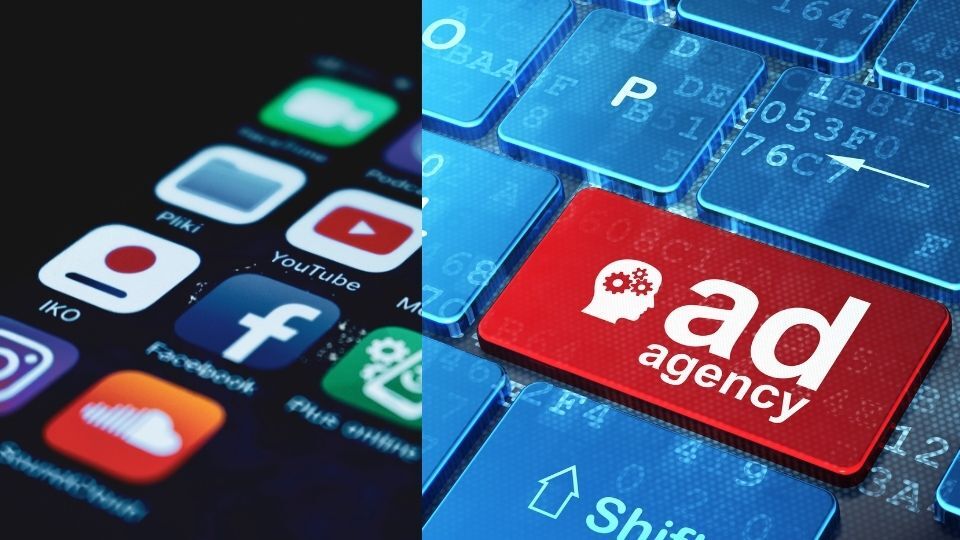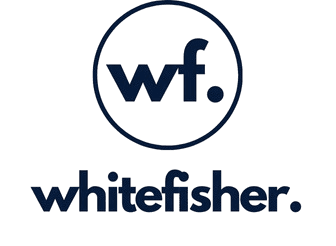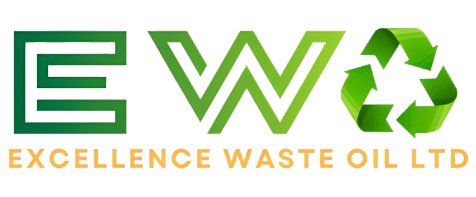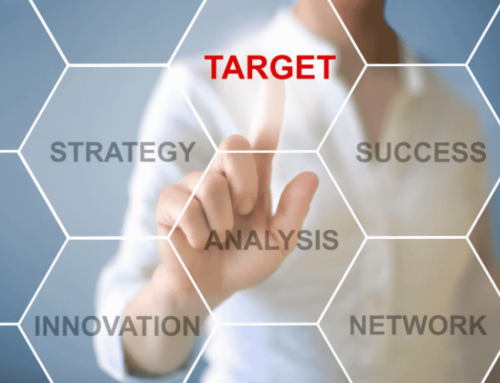Why Facebook Ads Matter for Agencies
If you’re running a digital agency in 2025, your clients expect more than generic strategies. They want to know how to increase ROI-driven results fast. That’s where Facebook Ads come in—not as an afterthought, but as a cornerstone of scalable performance marketing strategy.
This guide is built to give your agency the blueprint. Not theory. Not recycled fluff. Just real, proven strategy tailored to Facebook Ads for agencies.
Whether you manage ad spend for local businesses, e-commerce brands, or global service providers, the ability to plan, execute, and scale Facebook campaigns separates top-tier agencies from the rest.
Why? Because Facebook’s ad platform still offers unmatched granularity in audience targeting, data tracking, and creative testing—if you know how to use it right.
Before we dive in, here’s the hard truth: most agencies treat Facebook Ads like a checkbox. They deliver impressions, a few clicks, maybe some leads. But they fail to turn campaigns into real growth engines. This guide exists to change that.
Setting the Foundation – Understanding Facebook Ads for Agencies
The Role of Facebook Ads in Agency Growth
Facebook Ads are no longer optional for agencies offering paid media or digital growth solutions. They’re expected.
Clients want performance—and Facebook, along with Instagram (under Meta), is still one of the most versatile, data-rich platforms for delivering measurable outcomes.
Here’s why Facebook Ads matter at the agency level:
- Speed to results: With the right setup, your agency can launch test campaigns within hours and start seeing conversions.
- Hyper-targeted reach: Whether it’s geo-targeting, behavioural triggers, or custom audiences, the Facebook Ads platform offers unmatched segmentation.
- Data-driven iteration: With A/B testing built in, you can optimise creatives, copy, landing pages, and bidding strategies in near real-time.
- Scalability: Once the funnel works, you can scale budget and performance without losing control of ROI.
For agencies, Facebook Ads are not just about client service—they’re a lever for recurring revenue, case studies, and reputation.
Key Benefits for Agencies Running Facebook Ads
Let’s break down how Facebook Ads align with key agency goals:
| Agency Goal | Facebook Ads Advantage |
| Retain clients | Transparent reporting and measurable results |
| Increase average client value | Cross-sell and upsell through retargeting and funnel strategy |
| Reduce churn | Regular campaign optimisation and visible performance improvements |
| Attract new clients | Use Facebook Ads for your own lead generation |
| Build authority | Share client wins and campaign insights publicly |
When used strategically, Facebook Ads for agencies become a full-cycle growth tool—not just a service offering.
The 2025 Landscape: What’s Changed
The Facebook Ad ecosystem in 2025 is more sophisticated—and more competitive—than ever before. Here’s what’s shaping it:
- AI-powered ad delivery: Meta’s algorithm is better at automating delivery and improving performance when fed the right inputs.
- Data privacy rules: Agencies must navigate GDPR-compliant tracking with server-side integrations like the Meta Conversion API.
- Creative-first performance: Audiences are more ad-savvy. Poor creative equals wasted spend. Agencies must lead with thumb-stopping content.
- Less manual tweaking, more strategic planning: Smart automation means media buyers need to shift focus from micro-changes to macro strategy.
Why Agencies Fail at Facebook Ads
Most agency campaigns fail for one of these reasons:
- Poor campaign structure: No funnel logic, disorganised ad sets, wrong objectives.
- Weak messaging: Ads that try to talk to everyone end up resonating with no one.
- No testing system: Agencies launch ads and hope for the best. No framework, no learning loop.
- Lack of transparency with clients: Failure to explain performance data leads to lost trust, even when results are decent.
- No internal expertise: Relying on freelancers or templated campaigns prevents real growth and retention.
Understanding these pitfalls is essential. If you want to stand out, your agency needs a disciplined, repeatable approach that delivers client results and builds your brand.
Structuring Facebook Ad Campaigns That Work for Clients
Before a single pound is spent on media, structure matters. Most underperforming campaigns share one root issue: poor setup.
As an agency, your Facebook Ad structure needs to do three things:
- Reflect the sales funnel
- Enable efficient testing
- Allow for easy reporting and optimisation
Let’s break down how to build Facebook Ad campaigns that actually work for clients—and make your agency look brilliant in the process.
1. Campaign Objectives: Matching Intent with Outcome
Many agencies still default to “Traffic” or “Conversions” and hope for the best. Instead, objectives should match the client’s business goals and user intent.
| Funnel Stage | Best Objective to Use | Why It Works |
| Awareness | Reach, Video Views | Maximise impressions or engagement |
| Consideration | Traffic, Engagement, Leads | Build retargeting pools or collect leads |
| Conversion | Conversions, Sales | Drive purchases or actions |
| Loyalty | Custom Conversions, Offers | Target repeat buyers, upsells |
Always choose an objective based on the end result the client wants—not vanity metrics.
2. Ad Set Segmentation: Targeting with Precision
Here’s where most agencies either oversimplify or overcomplicate. You don’t need 15 ad sets. You need 3-5 well-defined segments per campaign.
Recommended ad set segmentation strategy:
- Cold Prospecting: Interests, Lookalikes (1–3%), Broad
- Warm Engagement: Page viewers, engagers, video viewers
- Hot Leads: Website visitors, add-to-carts, past buyers
Pro tip: Use Advantage+ placements and campaign budget optimisation (CBO) where applicable to let Meta’s machine learning find the best allocation—after you’ve tested audiences and creative.
3. Creative Mapping: Funnel-Specific Messaging
Every ad should speak to the audience’s stage in the buyer journey.
| Funnel Stage | Creative Focus | CTA Example |
| Cold | Problem awareness, big idea | “Learn more” |
| Warm | Solution benefits, proof | “Get a free trial” |
| Hot | Offer, urgency, credibility | “Buy now” |
Match each ad to the right psychology. For instance, cold audiences don’t need features—they need relevance. Warm audiences want to know if you’re credible. Hot audiences need a reason to act now.
4. Naming Conventions: Stay Scalable and Client-Ready
Clean naming saves your team hours per week. Use a consistent format across campaigns, ad sets, and ads.
When a client calls asking about performance, you’ll be ready—without scrolling through a mess of unnamed assets.
5. A/B Testing: Controlled, Not Chaotic
Don’t test everything at once. Choose one variable at a time—copy, image, headline, CTA—and use Facebook’s A/B test tool or duplicate ad sets manually with structured splits.
What to test first:
- Hook/image (most impact)
- Headline
- CTA
- Offer structure
Testing should be fast and consistent. If a variation outperforms by 20% or more, implement it into the next round of ads.
Building High-Impact Creatives for Agency Clients
You can have flawless targeting and perfect structure—but if the creative flops, the campaign fails.
Creative is the make-or-break factor in facebook ads for agencies. The algorithm now heavily prioritises engagement, relevance, and scroll-stopping power. And in 2025, users are more resistant than ever to boring, recycled content.
Agencies need a system to produce, test, and scale creative that drives actual performance.
1. Understand the Role of Creative at Each Funnel Stage
Each part of the funnel demands different messaging and formats. Don’t run the same creative across cold, warm, and hot audiences. That’s lazy—and it underperforms.
| Funnel Stage | Creative Type | Messaging Focus |
| Cold | UGC, storytelling video | Pain points, emotions, hook-led copy |
| Warm | Explainer, demo, proof | Benefits, credibility, features |
| Hot | Offer-focused static | Scarcity, urgency, testimonials |
Agencies should map out creative by funnel. This ensures campaigns move users along a journey—not just bombard them with ads.
2. Creative Formats That Convert in 2025
Different industries respond to different ad formats. Here’s what’s working across the board right now:
- Short-form video (6–15 seconds): Fast-paced, mobile-first videos dominate. Use text overlays, music, and hook within the first 2 seconds.
- Carousel ads: Great for product showcases, step-by-step processes, or highlighting multiple benefits.
- Static image ads: Simple and cost-effective, but only if the design is sharp and the offer is clear.
- UGC-style videos: These outperform polished commercials in many niches. Raw, honest, real.
- Story and Reel placements: Optimised vertical creatives are non-negotiable for mobile dominance.
Your agency doesn’t need a studio to win. You need a process.
3. The 3-Second Hook Rule
If your creative doesn’t grab attention in the first three seconds, it won’t get seen.
High-performing hooks:
- Ask a bold question: “Still wasting money on [problem]?”
- Call out a pain point: “Your Facebook Ads probably suck.”
- Show a transformation: “How we took this from £1k to £50k in 30 days.”
Hooks should be visual and verbal. Combine a killer headline with an eye-catching visual to stop the scroll.
4. Designing Creatives for Facebook’s AI Delivery
Facebook now uses creative performance as a signal to optimise delivery. That means:
- Add multiple variations per ad set: Let the algorithm test.
- Use text overlays with clear CTAs: “Download your free guide” or “See how it works.”
- Branding should be subtle, not loud: Too much branding screams ‘ad’ and gets skipped.
- Avoid excessive text: It still throttles reach.
5. Creative Production Workflow for Agencies
Here’s how smart agencies streamline creative without burning time or budget:
- Creative Brief Template – Standardise how you request assets from clients.
- Content Calendar – Plan new creatives per funnel stage, updated bi-weekly or monthly.
- Asset Library – Store winning videos, testimonials, images, and headlines.
- Rapid Testing Protocol – Launch small-budget tests with new creatives every 7–10 days.
- Retrospective Analysis – Evaluate creatives monthly: which ones had low CPM, high CTR, high ROAS?
When done right, your creative strategy becomes a compounding advantage. Every test makes the next campaign sharper. Every win builds your agency’s authority.
Scaling Facebook Ads for Agencies Without Killing ROI
Once you’ve proven that a campaign works—solid CTRs, conversions, consistent ROAS—it’s time to scale. But here’s the agency trap: scale too fast, and results nosedive. Scale too slow, and you leave money on the table.
Scaling Facebook Ads for agencies requires surgical precision. It’s not just “spend more”. It’s about preserving performance while increasing output—for your clients and your agency alike.
Let’s break down a real scaling strategy that protects ROI and builds credibility.
1. Vertical vs. Horizontal Scaling
There are two core paths to scale:
- Vertical scaling: Increasing budget on a winning ad set or campaign.
- Horizontal scaling: Expanding to new audiences, creatives, or placements.
When to scale vertically:
- Ad set has stable results over 3–5 days
- Frequency is under 2.5
- ROAS is above breakeven + target margin
How to do it safely:
Raise budget by no more than 20–30% every 48–72 hours. Avoid sudden jumps that reset learning.
When to scale horizontally:
- You’ve reached audience saturation
- Cost-per-result is creeping up
- You have tested creative that can be repurposed
Ways to scale horizontally:
- Duplicate ad sets with new audience segments
- Test new creatives using winning copy formulas
- Expand placements (e.g., try Reels, Messenger)
Pro tip: Horizontal scaling is safer long-term. It protects ROAS by spreading risk and keeping freshness high.
2. Automation Tools and Rules That Actually Help
Meta’s ad platform now supports powerful automation—but only when configured correctly.
Recommended automated rules for scaling:
- Pause low performers: “Turn off ad if CPA > £X after 3 days”
- Increase budget on winners: “If ROAS > 3, increase budget by 20%”
- Schedule creative refresh alerts: Remind your team to swap out stale ads every 10–14 days
Avoid over-automation. You still need human judgement. But automating the boring bits saves time and keeps performance on track.
3. Use CBO (Campaign Budget Optimisation) Smartly
CBO lets Facebook distribute budget across ad sets based on performance. Use it once you’ve:
- Validated audiences and creatives manually
- Gathered conversion data on each asset
- Know which ad sets to include in the mix
Tip: Don’t use CBO during early testing. It muddies the results. Use it for scaling stable campaigns with known winners.
4. Scaling Without Losing Client Trust
Scaling campaigns comes with risk. Costs can spike. Conversions can lag. Clients can panic. Your job is to set expectations and lead with data.
Best practices:
- Show historical performance trends when proposing scale
- Communicate daily during initial scale period
- Use visual reports to explain what’s happening and why
It’s not just about media buying—it’s relationship management at scale.
5. When to Pull Back (and Why That’s Smart)
Scaling isn’t linear. Every campaign plateaus. Smart agencies know when to pause, reset, or shift strategy.
Pull back if:
- ROAS drops 30%+ over a 3-day window
- Frequency exceeds 4+ and engagement tanks
- New creatives fail to revive performance
Scaling isn’t a straight line—it’s a cycle. Push, observe, correct, push again. If you can master this rhythm, your agency will outperform 90% of competitors.
Using Facebook Ads to Acquire Clients for Your Agency

If you’re not using Facebook Ads to acquire clients, you’re leaving revenue on the table. You already know the platform works. Why not apply that expertise to fill your own pipeline?
Here’s the hard truth: Agencies that rely only on referrals and organic posts will eventually stall. If you want predictable, scalable growth, you need a lead generation machine—and Facebook Ads can be exactly that.
Let’s break down how to use facebook ads for agencies not just as a service, but as a sales engine.
1. Define Your Ideal Client Persona
Before running ads, get painfully clear on who you’re targeting. Vague “business owners” or “SMBs” won’t cut it. You need precise ICPs (Ideal Customer Profiles).
Define by:
- Industry (e.g. coaches, ecommerce, legal, real estate)
- Company size or revenue
- Pain points (e.g. “stuck at 6 figures”, “need qualified leads”, “struggling to scale”)
- Service need (e.g. lead gen, retargeting, funnel design)
Your messaging and offer must speak directly to this profile.
2. Craft a Performance-Based Offer
Most cold traffic won’t convert on “book a free consultation”. You need an irresistible hook—something that gives immediate value and positions you as the expert.
Winning offers:
- Free audits: “We’ll break down your current funnel and tell you why it’s underperforming.”
- Case study downloads: “How we scaled [X client] to £150K in 60 days with £10/day ad spend.”
- Mini training or VSL (Video Sales Letter): Educational content that transitions into a CTA.
This isn’t about volume. It’s about attracting qualified leads who see you as the authority before the call.
3. Build a Simple Funnel That Converts
Here’s a tried-and-tested funnel for agency lead gen:
Ad → Lead Magnet Landing Page → Thank You Page with CTA → Email Nurture → Sales Call
Key elements:
- Landing page: Fast, focused, benefit-first. No distractions.
- Email nurture: At least 3–5 automated follow-ups that build trust and offer value.
- CTA: Drive toward a discovery call, strategy session, or audit.
Use tools like HighLevel, Webflow, or Unbounce to keep this streamlined.
4. Targeting That Brings You Buyers
For agency lead gen, use:
- Interest targeting: “Small business owners”, “Marketing Directors”, “Online courses”, “Shopify”
- Behavioural targeting: Business page admins, ad account managers
- Lookalikes: Based on past lead lists, Calendly bookings, or CRM data
- Custom audiences: Site visitors, social engagers, LinkedIn retargeting (via UTM and pixel sync)
Layer demographics to filter for your buyer persona. For example:
Age 30–55, English-speaking, living in UK, Job title contains “Founder” or “CEO”
5. Create Content That Sells Without Feeling Salesy
Your ad creative should follow this structure:
- Hook: “Struggling to get consistent leads for your [industry] business?”
- Problem-agitate-solve: Explain the issue, why it’s costing them, and hint at your solution.
- Social proof: Client results, testimonials, screenshots
- CTA: “Download the free strategy breakdown” or “Get your free audit today”
Keep it human. Position your agency as helpful, not desperate. Share real wins.
6. Manage and Optimise Your Own Lead Funnel
Treat your agency’s ad account like a client account:
- Track CPL (Cost Per Lead), CVR (Conversion Rate), and ROAS
- Split test your hooks and offers
- Re-market to site visitors who didn’t book
- Use UTM tags to track where each lead came from
Monitor performance weekly. Treat it as a core business function—not a side experiment.
7. Automate and Qualify Your Leads
Use tools like Calendly, Typeform, or Paperform to qualify leads before the call. Ask:
- What service are you looking for?
- What’s your current monthly revenue?
- Are you currently running ads?
- What’s your marketing budget?
Filter out tyre-kickers, time-wasters, and freelancers fishing for strategy.
Reporting and Retention – Keeping Clients Long-Term with Transparent Results
Acquiring clients is hard work. Retaining them is where the real money is made. Unfortunately, most agencies drop the ball right after the contract is signed.
If you want to build long-term client relationships—and predictable MRR—you need a bulletproof reporting and communication system.
Transparent reporting isn’t about vanity metrics. It’s about showing how your agency’s Facebook Ads for agencies approach directly impacts a client’s bottom line.
1. What Clients Actually Care About in Reports
Your reports must tell a story that answers these questions:
- Are we generating leads/sales?
- Are results improving over time?
- Is the ad spend justified?
- What’s next?
Use a simple but effective reporting hierarchy:
- Business impact: Revenue, ROAS, lead cost, customer acquisition cost
- Ad performance: CTR, CPM, CPC, conversion rate
- Insights & recommendations: What you’re testing, what’s changing, what to expect
Avoid jargon. Clients don’t care about Click-to-Lead ratios—they care if they’re making money.
2. Recommended Reporting Tools for Agencies
Here are tools that save time and make you look sharp:
- DashThis / Databox / ReportGarden: Visual, automated dashboards
- Looker Studio (Google Data Studio): Free and customisable
- Funnel.io: For aggregating data across Meta, Google, and CRM
- HighLevel: Combines reporting with CRM and automations
Set reports to auto-send weekly or monthly, but always add context in a short Loom video or email summary.
3. Monthly Strategy Calls That Retain Clients
Use these calls to:
- Walk through results
- Reframe expectations (especially if scaling or testing)
- Share insights the client wouldn’t see on their own
- Introduce new ideas (upsells, fresh creative angles)
Structure:
- 5 min – Recap of previous month’s goals
- 10 min – Performance deep dive
- 10 min – Learnings and next steps
- 5 min – Client questions and concerns
Showing ownership of strategy builds trust—and leads to longer contracts and referrals.
4. Attribution & Tracking: The Real Source of Truth
As data privacy evolves, clean attribution is vital.
For accurate Facebook Ads performance:
- Implement Meta Pixel + Conversion API (CAPI)
- Use UTM parameters on every link
- Track leads/sales inside CRM (not just in Ads Manager)
- Reconcile ad spend vs revenue monthly
Use this data to attribute leads properly—especially for clients who say, “Our leads are down,” when it’s really a sales process issue.
5. Retention Frameworks for Your Agency
Retain clients by delivering more than just ads:
- Quarterly business reviews (QBRs): Step back, assess big picture
- Ongoing creative testing: Keep ads fresh
- Educational insights: Teach clients what’s working and why
- Proactive recommendations: Suggest new offers, segments, or funnels
Position your agency not as a vendor, but as a growth partner.
Frequently Asked Questions
Q1: How much should agencies charge for Facebook Ads management?
It depends on service scope, but a strong baseline is:
- Small clients: £750–£1,500/month
- Mid-tier: £1,500–£3,500/month
- High-growth clients or ecommerce brands: £4,000+/month
Always price based on value and outcomes, not just hours. If your Facebook Ads for agencies strategy generates revenue, you’re not an expense—you’re an asset.
Q2: What industries are best suited for agency-led Facebook Ads?
The most successful verticals include:
- E-commerce and DTC brands
- Online coaches and course creators
- Lead-gen-heavy services (legal, real estate, medical, finance)
- Local businesses with clear conversion paths
That said, any business that benefits from consistent customer acquisition can see results—if the offer and funnel are solid.
Q3: What’s the minimum ad spend clients should commit to?
We recommend a minimum monthly ad spend of £1,000–£1,500. This allows for proper testing, funnel validation, and some room to scale.
Low budgets can work, but the learning phase takes longer and limits what your agency can optimise effectively.
Q4: How long does it take for Facebook Ads to start working for clients?
Typically, 2–4 weeks for early traction, 60–90 days for strong performance.
Here’s the breakdown:
- Weeks 1–2: Creative and audience testing
- Weeks 3–6: Funnel optimisation, ROAS stabilisation
- Day 45+: Scaling starts, consistent reporting cycles begin
Set expectations early. The best results come from strategy, not shortcuts.
Q5: How can an agency stand out in a crowded Facebook Ads market?
Great question. Focus on:
- Niche specialisation: Be the go-to agency for a specific industry
- Strong case studies: Show results with proof
- Client education: Build trust by teaching
- Custom strategies: Avoid cookie-cutter packages
- Transparent pricing and communication
Your facebook ads for agencies approach should position your team as growth partners, not just ad managers.
Q6: Should agencies use Meta’s Advantage+ campaigns?
Yes—but selectively.
Advantage+ campaigns work well when:
- You have proven creative assets
- You’re scaling, not testing
- You trust Meta’s automation to allocate budget effectively
However, don’t use it blindly. It’s best as a scaling tool, not for early-stage funnel testing.
Q7: What’s the best structure for a Facebook Ads team inside an agency?
A lean but effective team setup:
- Strategist/Media Buyer – Owns campaign setup, optimisation, and budget scaling
- Creative Lead – Manages video, image, and copy assets
- Client Success Manager – Handles communication, reporting, retention
- Analyst/Tracking Specialist (optional) – Ensures data integrity and attribution
This structure ensures your facebook ads for agencies execution is agile, accountable, and scalable.
Smart Digitants Can Help You Win with Facebook Ads for Agencies
Running Facebook Ads for agencies isn’t just about launching campaigns—it’s about building repeatable systems that drive measurable growth for your clients and your agency.
The agencies winning in 2025 are the ones who treat Facebook Ads as a discipline, not a bolt-on service. If you follow the systems and strategies in this guide, you’ll stand out in a crowded market, retain better clients, and scale your revenue sustainably.
Whether you’re an early-stage agency looking to launch winning campaigns or an established firm ready to scale smarter, Smart Digitants is built to give you the strategic edge.
Contact us today
Our Content Writing Team at Smart Digitants is a group of dedicated professionals, passionate about creating high-quality, engaging content.
- Why Facebook Ads Matter for Agencies
- Setting the Foundation – Understanding Facebook Ads for Agencies
- Structuring Facebook Ad Campaigns That Work for Clients
- Building High-Impact Creatives for Agency Clients
- Scaling Facebook Ads for Agencies Without Killing ROI
- Using Facebook Ads to Acquire Clients for Your Agency
- Reporting and Retention – Keeping Clients Long-Term with Transparent Results
- Frequently Asked Questions
- Q1: How much should agencies charge for Facebook Ads management?
- Q2: What industries are best suited for agency-led Facebook Ads?
- Q3: What’s the minimum ad spend clients should commit to?
- Q4: How long does it take for Facebook Ads to start working for clients?
- Q5: How can an agency stand out in a crowded Facebook Ads market?
- Q6: Should agencies use Meta’s Advantage+ campaigns?
- Q7: What’s the best structure for a Facebook Ads team inside an agency?
- Smart Digitants Can Help You Win with Facebook Ads for Agencies










